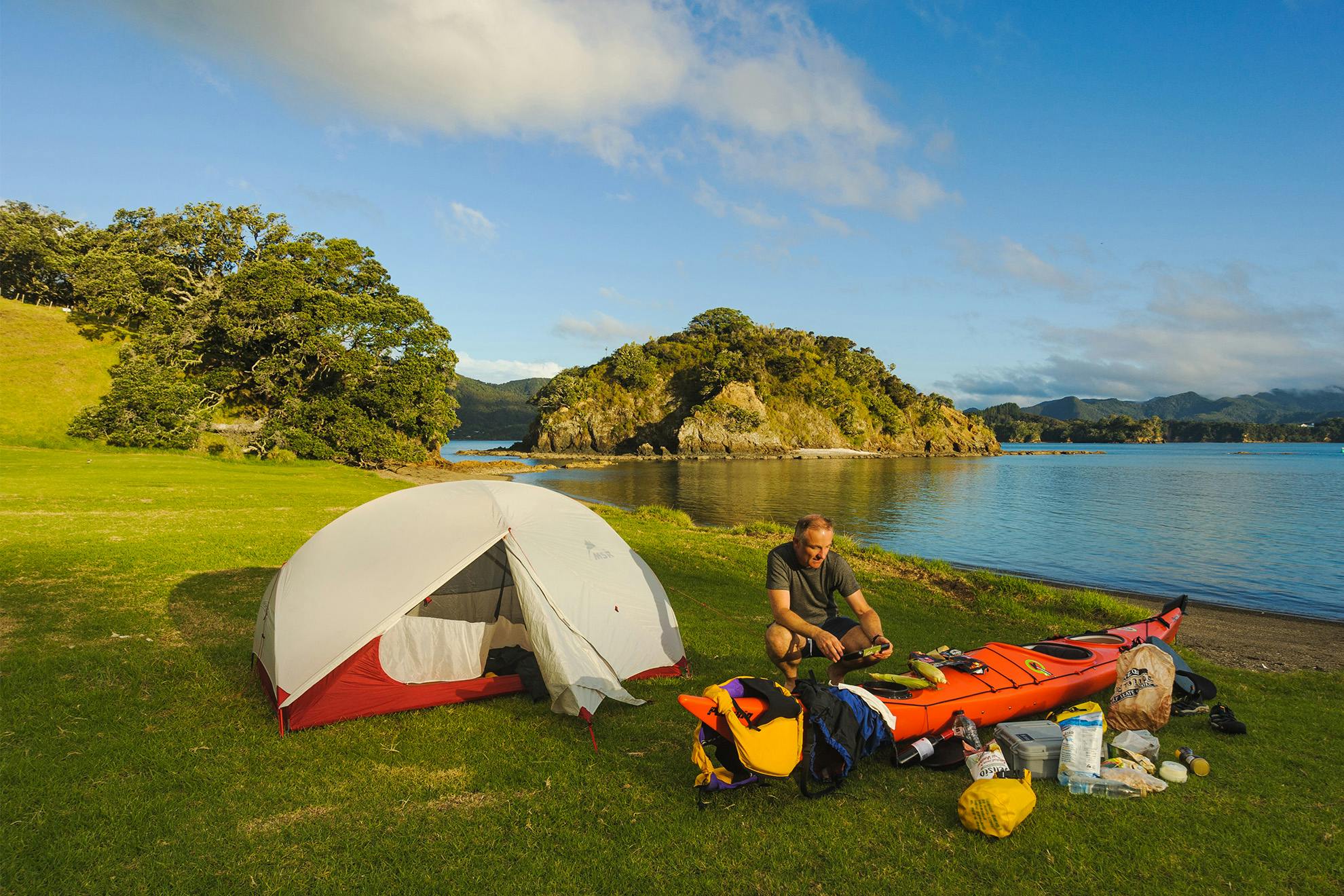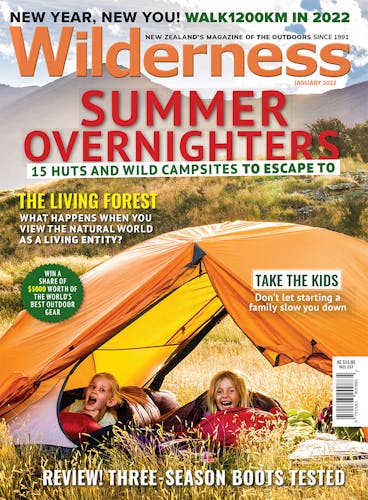The long summer holiday is the perfect time to plan an overnight stay at a wild camping spot or backcountry hut. The mostly easy trips featured here will satisfy younger trampers and those just starting out, while still whetting the appetite of trampers seeking greater challenges.
Urupukapuka Island Recreation Reserve, Northland
Distance 5km Time 2.5–3hr Grade Easy
By Shaun Barnett
Once farmed, Urupukapuka is now a bird sanctuary where the rare New Zealand dotterel can be seen.
There are regular ferry services from Paihia landing at Otehei Bay. Alternatively, competent sea kayakers can reach Urupukapuka across relatively sheltered waters from Rawhiti. Because there’s so much to explore, it’s worth staying overnight, and at Cable, Sunset and Urupukapuka bays there are basic DOC campsites at excellent locations.
An easy circuit around the island makes a memorable day out. Thanks to conservation efforts by DOC and local iwi, native trees are steadily replacing the former grasslands and there are regular views over the surrounding islands.
From Otehei Bay, head towards Urupukapuka Bay (where you may want to set up camp before carrying on). From the campsite, head north along the track that climbs to the island’s eastern ramparts, overlooking gnarled pōhutukawa and a craggy coastline. The track reaches a historic pā site overlooking a passage to the neighbouring Waewaetōrea Passage and Island. Waewaetōrea means the ‘footsteps of the oystercatcher’; an apt name.
Head south-east to Otiao Bay (good swimming), then climb the track to the island’s high point at 94m. From there it’s a 30-minute stroll back to the Urupukapuka Bay Campsite. On your second day, it’s worth exploring the tracks in the island’s southwest, that reach Cable and Sunset Bays, before heading back to Otehei and the ferry.
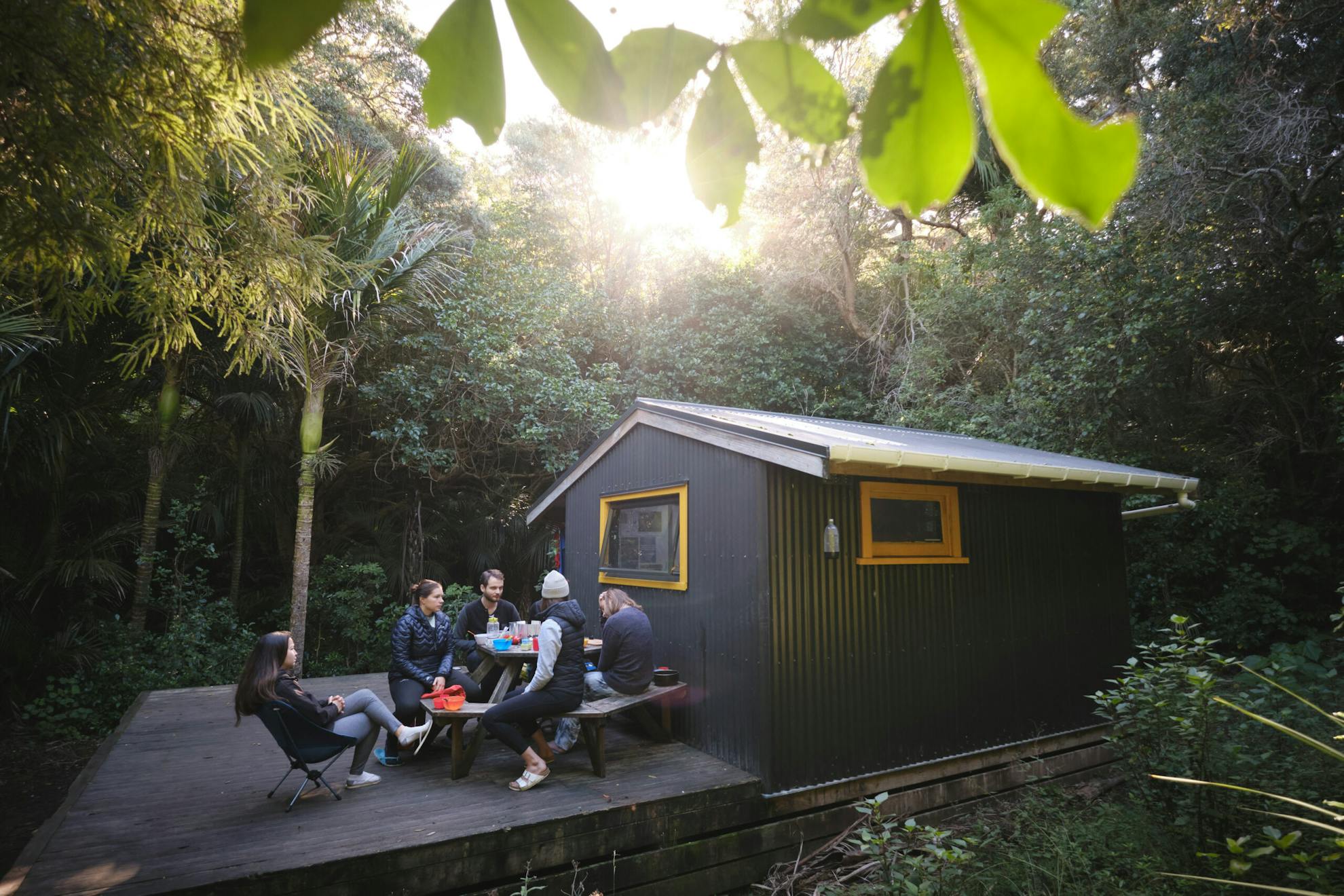
Peach Cove Track, Northland
Distance 1.8km Time 1.5hr Grade Easy
By Matthew Cattin
Peach Cove Hut is as charming as it sounds. Little larger than a woodshed, the green and yellow eight bunk abode blends in wonderfully with its nīkau and kawakawa neighbours, which threaten to one day swallow it entirely. It stands in the shadow of an ancient pohutukawa sprouting from an even older boulder, fallen once upon a time from the volcanic outcrops high above.
From the hut’s sizeable deck, trampers can watch kākā, tūī and kererū as they flit across the clearing. At night, kiwi and ruru sound in the darkness. Peach Cove itself is just minutes away. It’s a private sandy bay blotted by boulders and guarded by pohutukawa.
It’s a beach best observed from the water, as behind it the forest rises steeply to the Whangarei Head’s famous crown – volcanic plugs thrusting up like fingers.
It’s a gorgeous spot for swimming, although I’ve been surprised before by a nightmarish sniffing during a night swim, which turned out to be a sea lion – so best look before you leap. The most direct route to the hut is from a car park on the road to Ocean Beach. With reasonable fitness, it should take about an hour, though it is a steep punt up and an even steeper descent of the infamous stairs, which will have knees knocking by the bottom.
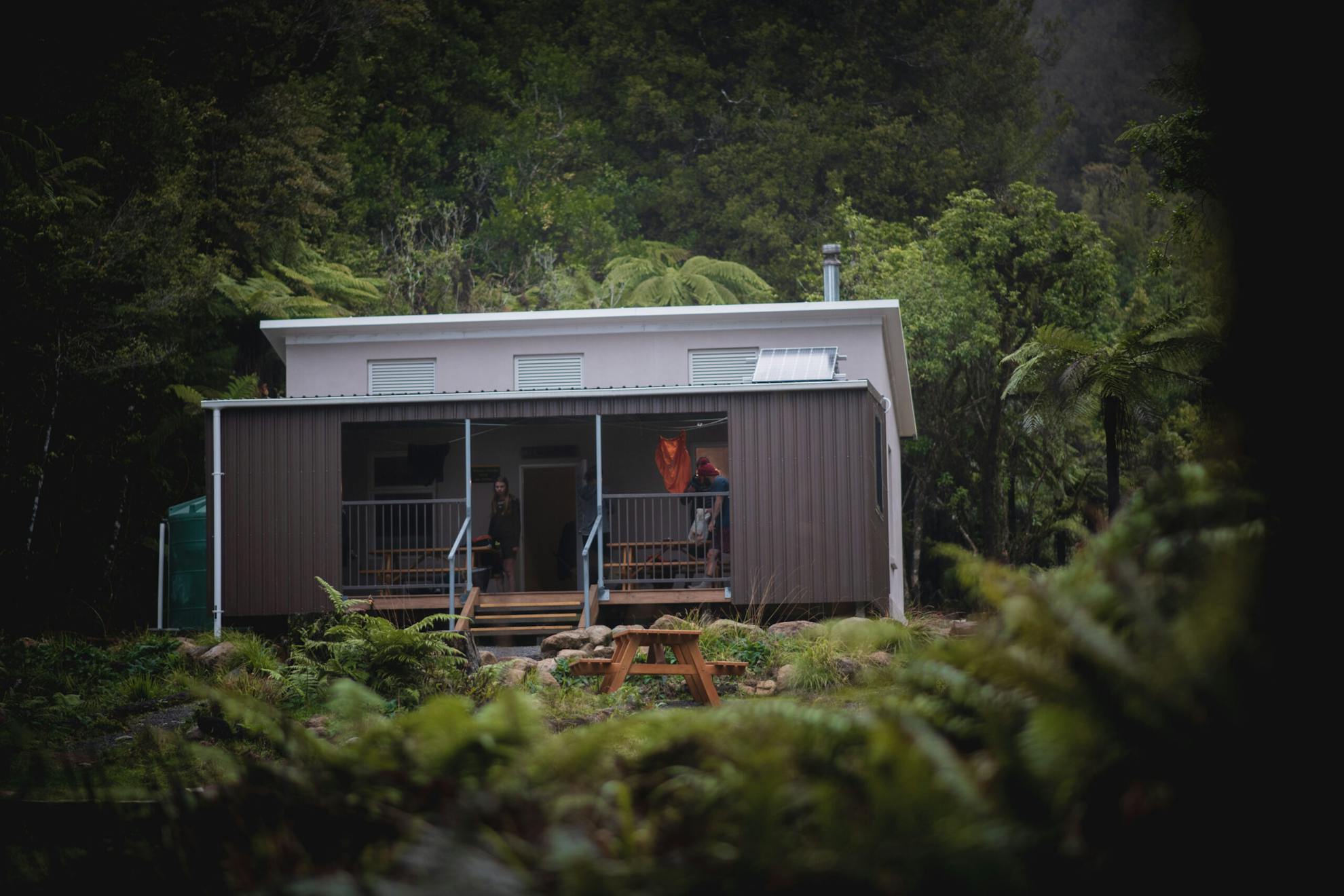
Te Whare Okioki, Kaimai Mamaku Forest Park
Distance 6.7km Time 3-4hr Grade Moderate
By Matthew Cattin
Te Whare Okioki – the resting place – is the newest hut in Kaimai Mamaku Conservation Park and one of the best hut designs I’ve encountered.
Built in 2019 by the Kaimai Ridgeway Trust, the spacious 12-bunker is set in a large clearing on the North-South Track. It has a high ceiling, ample living space and a monstrous, half-enclosed deck.
Getting there is a ‘choose your own adventure’ scenario, as the 85km North-South Track is centipede-ish, with dozens of access tracks for legs. A decent overnight option, however, is to tackle it from the west via Te Tuhi Track, which begins on an approach over farmland, before ascending through bush. There are several river crossings before the route intersects the North-South Track, though they are relatively safe in rain, and water flow is quick to recede.
If you have a large group, it’s well worth dropping a car and returning via Wairere Falls – the highest waterfall in the North Island. The North-South Track, while enjoyable for the claustrophobic bush, provides no views on this section and a descent on the falls track will add a breath of fresh air, and an excellent end to this fun weekender.
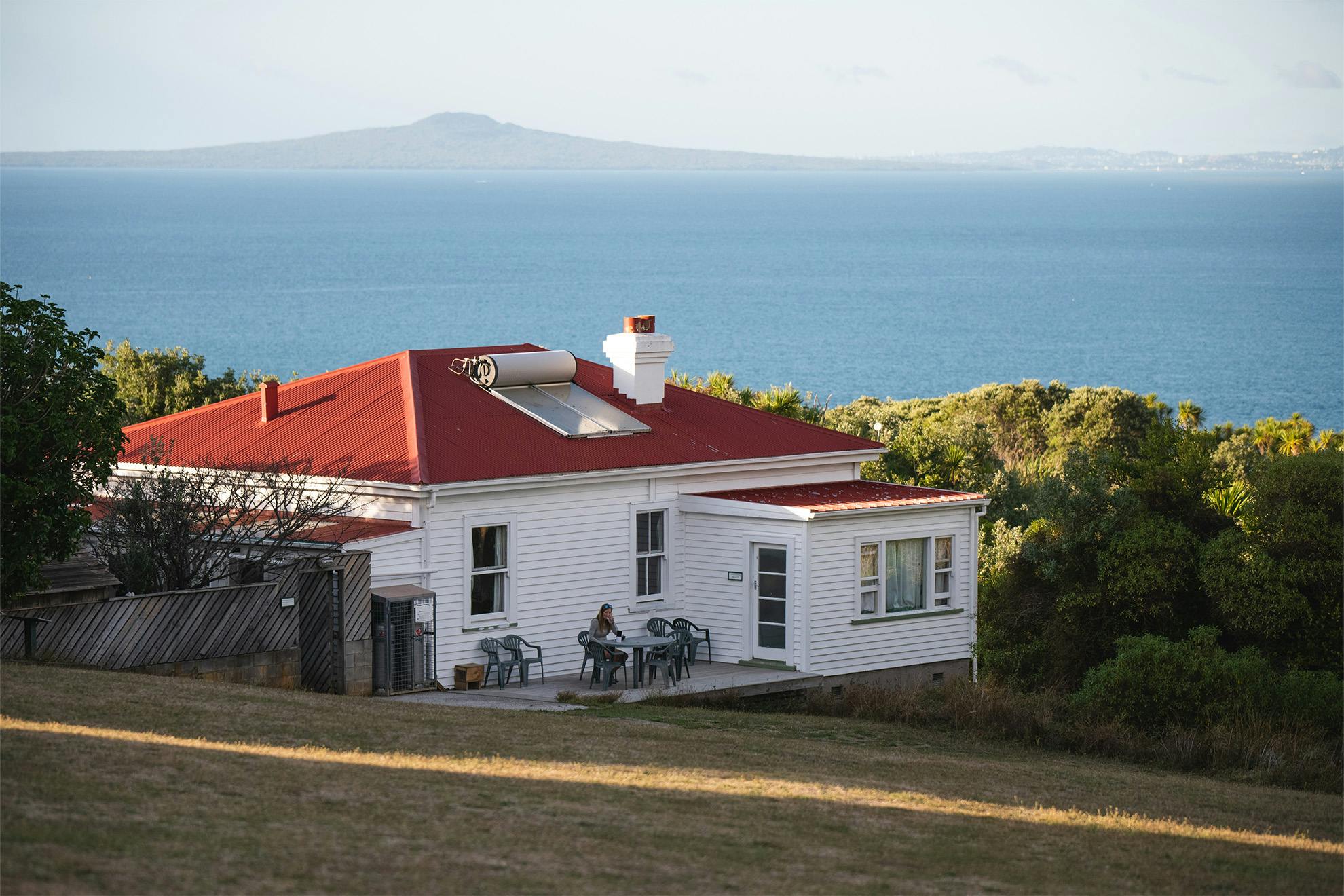
Tiritiri Matangi, Auckland
Distance 3.5km Time 20min-4hr Grade Easy
By Matthew Cattin
When the ferry disembarks and is pulled back into the gravity of the mainland, a true sense of nature settles over Tiritiri Matangi Island. As the sun sets gold behind Auckland, the diurnal birds fly their final errands before the night shift takes over.
Little more than a floating tittle anchored off Whangaparāoa Peninsula’s eastern tip, Tiritiri Matangi is a haven of endemic taonga and excellent day walks. At 2.2km², it’s possible to tick off the island’s walking network in half a day, but visitors would be far better to set their watches to island time and spend two or three days exploring its secrets.
For views, the East Coast Track is the one to take. Undulating over the eastern edge of the island, it provides exposed clifftop views and access to private rocky beaches. The northern tip is reached via the connecting North East Bay Track and explores isolated wetlands where visitors may chance upon mātātā, fernbird, and the site of Papakura Pā.
For wildlife, the Wattle Track is perhaps the loudest. Connecting the wharf to the Bunkhouse, the track is alive with birds and visitors may tick off kōkako, hihi, robin, kererū, tūī, kākāriki and korimako within minutes of leaving the wharf.
But the real treat of staying overnight is a chance to spot the nocturnal residents; the kiwi, tuatara, korora and wētāpunga.
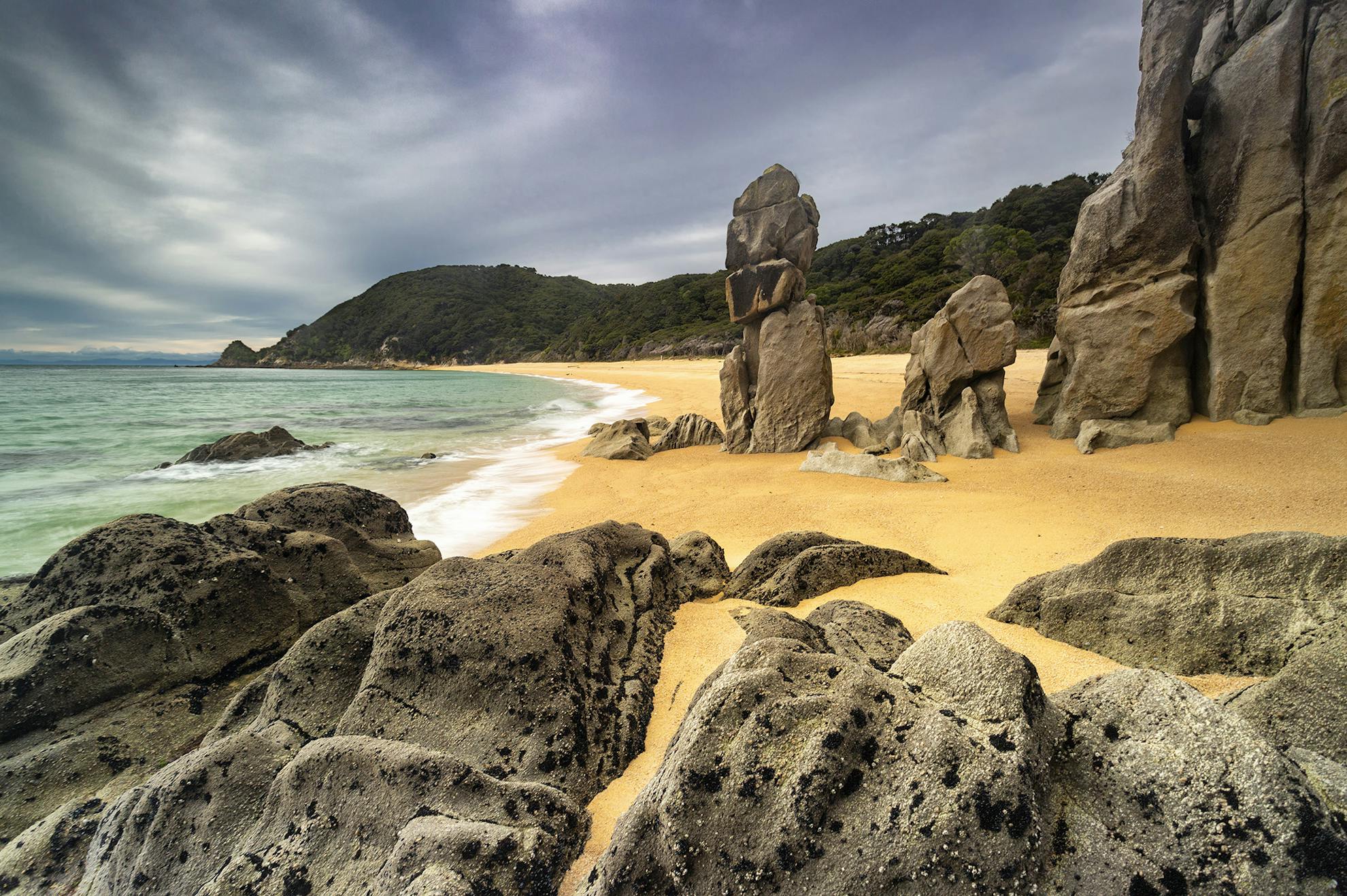
Anapai Bay, Tasman
Distance 3km Time 1 hour Grade Easy
By Raymond Salisbury
Anapai Bay is bookended by distinctive granite headlands, beyond the reach of most trampers on the popular Abel Tasman Coast Track. This crescent of golden sand, hemmed by native bush at the northern edge of Tasman Bay, evokes more of a wilderness vibe.
From Totaranui, take the easy Anapai Bay Track through grassy fields, skirting around a lagoon. Continue up the wide, clay track then cross the saddle to reach Anapai Bay.
The DOC campsite is sited on a high terrace above the beach, with scattered mānuka providing some shelter. Beware the resident weka – it has the kleptomaniac tendencies of a master thief.
Five minutes further, splash through the gap beyond the cliffs into Little Anapai, a cove of coarse orange sand and rock ledges. Here is Navigator Rock, typical of the geology in the northern reaches of the park, a striking example of erosion caused by the drama of two worlds colliding. These impressive granite sea stacks have rebutted the relentless pounding of the waves for centuries.
Next morning, the spectacular granite platform at Separation Point, with a seal colony and abundant wildlife, is worth a visit. Or go for a swim. Whichever way you get there, you can’t get much better than this portion of the Abel Tasman in high summer.
Beware the resident weka – it has the kleptomaniac tendencies of a master thief.
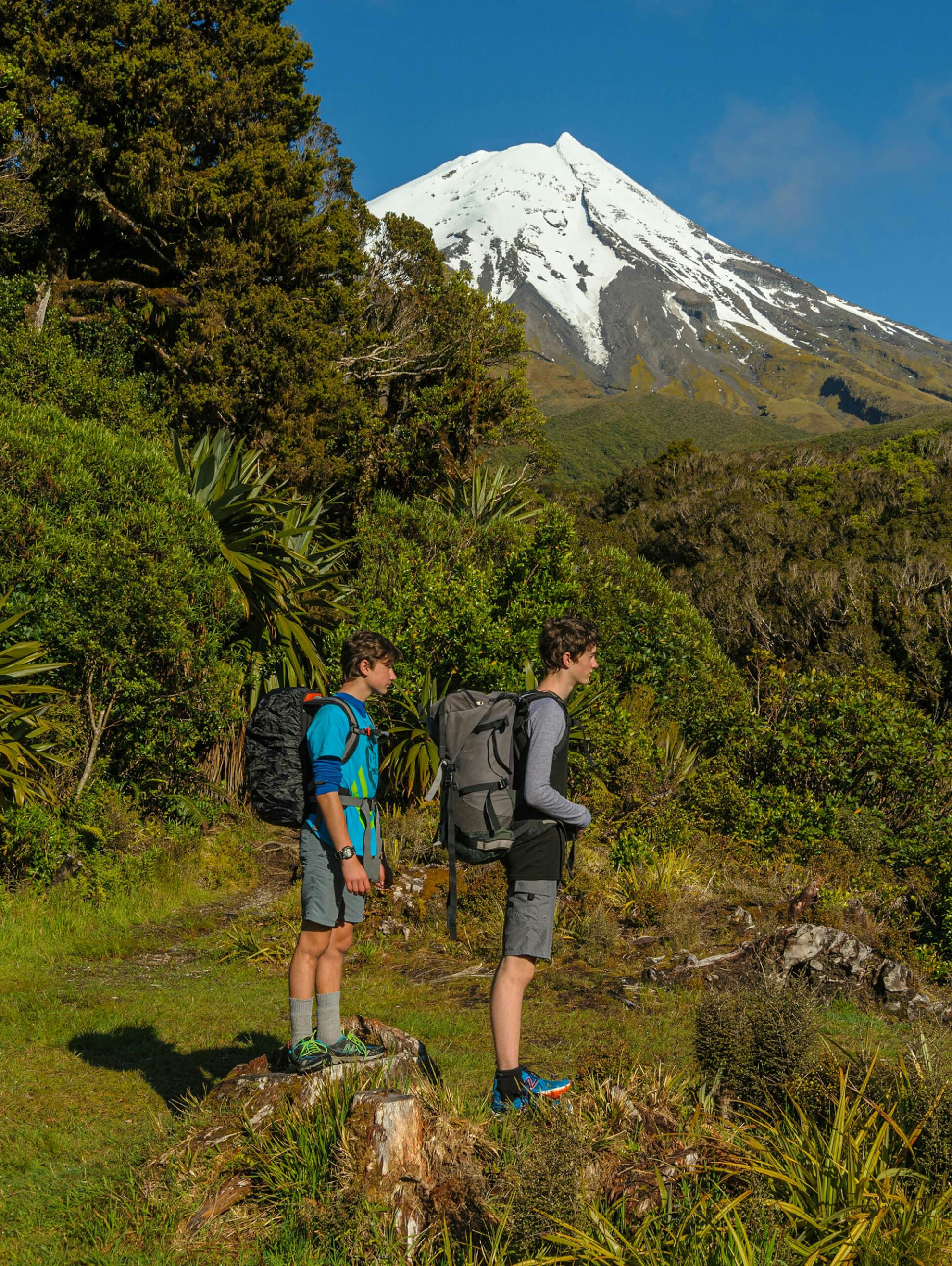
Waingongoro Hut, Taranaki
Distance 6km Time 1.5–2hr each way Grade Easy
By Shaun Barnett
This family-friendly hut offers a great opportunity for an overnight trip, with excellent views of Taranaki Maunga and the possibility of visiting both Dawson Falls and Wilkies Pools.
With three roads climbing high onto its slopes, Taranaki Maunga offers trampers excellent access to a range of tracks and huts. Waingongoro Hut is perched on the edge of a clearing giving a fine view of the imposing volcano, framed by the fleshy leaves of toi/mountain cabbage trees. The hut lies only a couple of hours walk from Dawson Falls and is a good destination for aspiring trampers or a place for introducing school-age children to the outdoors.
From the car park at Dawson Falls, take the Wilkies Pools Loop Track to visit this sculpted cascade, then connect with the Ridge Track, and branch off onto the Waingongoro Track. The Waingongoro River is, like many in the national park, deeply incised, and it’s worth making a short detour onto the swingbridge for a dizzying view. The hut lies a short distance beyond.
Return the same way before taking the Ridge Loop Track back to Dawson Falls.
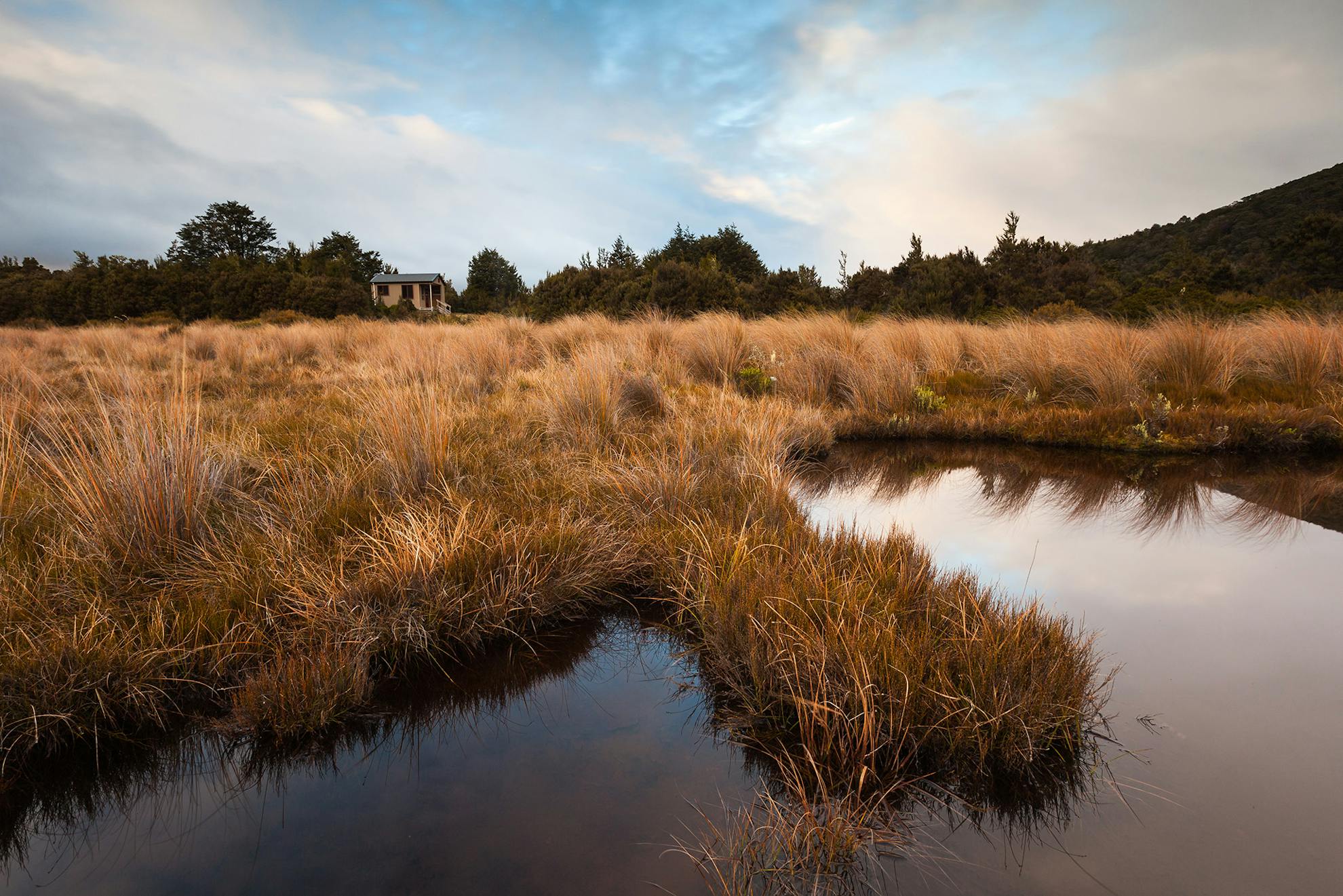
Red Hills Hut, Marlborough
Distance 6km Time 2-3hr each way Grade Moderate
By Pat Barrett
Red Hills Hut is sited at the toe of the ultramafic rock of the Red Hills in the Richmond Range and is reached on an easy climb from the highway.
Ultramafic is a geologic term meaning rocks with a very high iron and magnesium content, thought to have been extruded from the earth through lava flows. This rock is highly abrasive and has a peculiar red colour – hence ‘red hills’.
The track to the hut is mostly a 4WD road through bush to where the six-bunk hut stands on a saddle above Maitland Stream. There’s a great view over the Motueka Valley from here.
From the hut, an easy climb leads onto The Plateau for a glimpse into the heart of the Red Hills and its principal summit: Red Hill, 1790m. It’s possible to climb further along the range, too.
However, for an easy family-friendly overnighter to a nice new hut with excellent views, this place is hard to beat. Note; this is the Te Araroa Trail exit/entry point to the Richmond Range and the hut can get busy, so it’s advisable to take a tent.
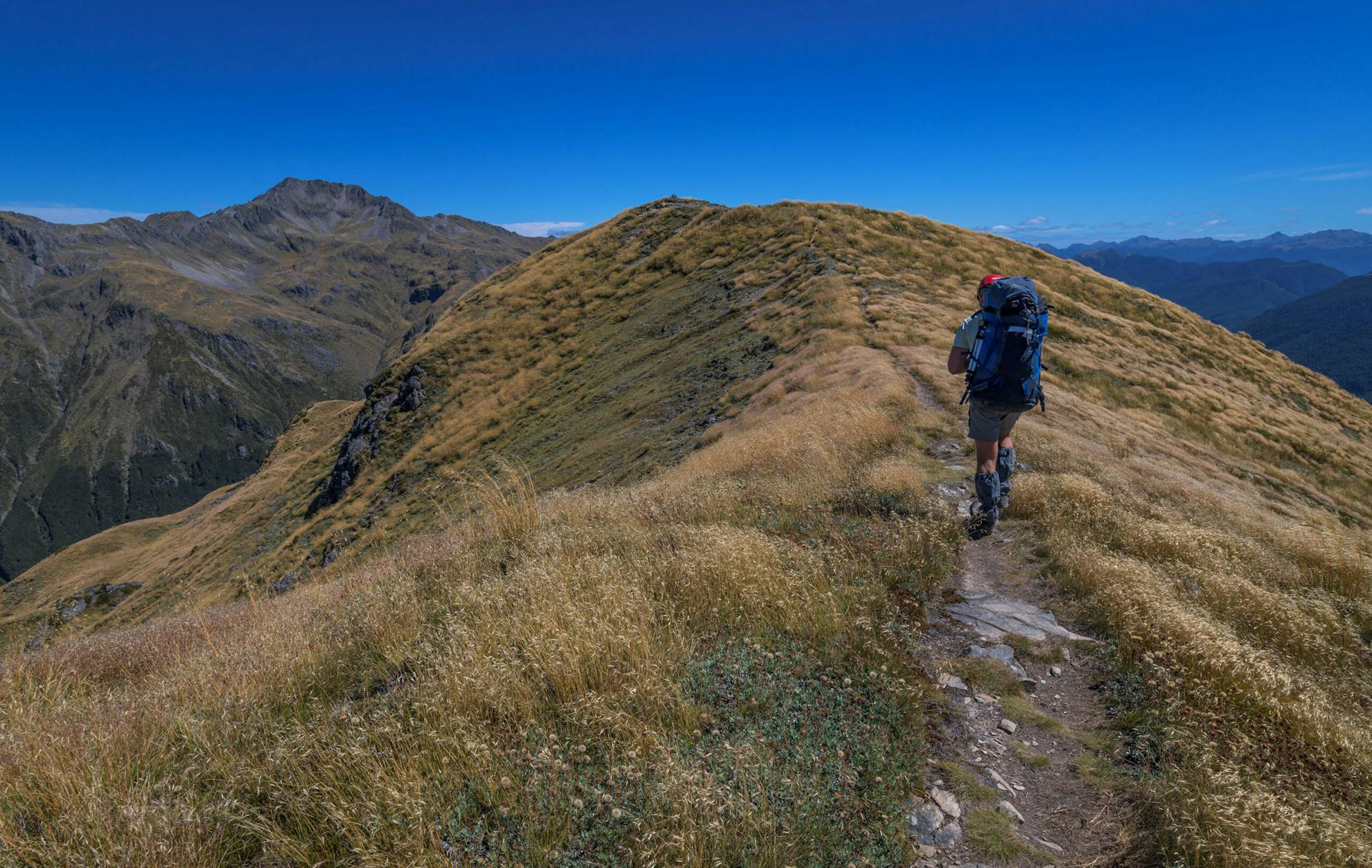
Mt Technical, Canterbury
Distance 8km Time 5-6hr each way Grade Difficult
By Pat Barrett
Mt Technical (1870m) is the highest summit in the Lewis Pass region south of the Spenser Mountains. There are numerous approaches and it offers a spectacular viewpoint.
For an overnight trip, it is best reached via the Lewis Tops Track, accessed from SH7 where there are numerous small tarns and campsites. The tarns are worth a visit and are dotted haphazardly along the ridge above Deer Valley.
It’s easy travel along the tops, a beautiful and absorbing walk westwards towards the high peaks. A large alpine basin under The Apprentice leads to the west ridge of Mt Technical, which goes up easy slopes to the summit. A more exciting ascent is the northeast ridge, which is narrow and airy and even has a short cheval section. It can be scrambled without a rope, with care.
The landscape is enthralling with rugged ridge crests, tussock basins, incised headwaters and deep carpets of forest in the valleys.
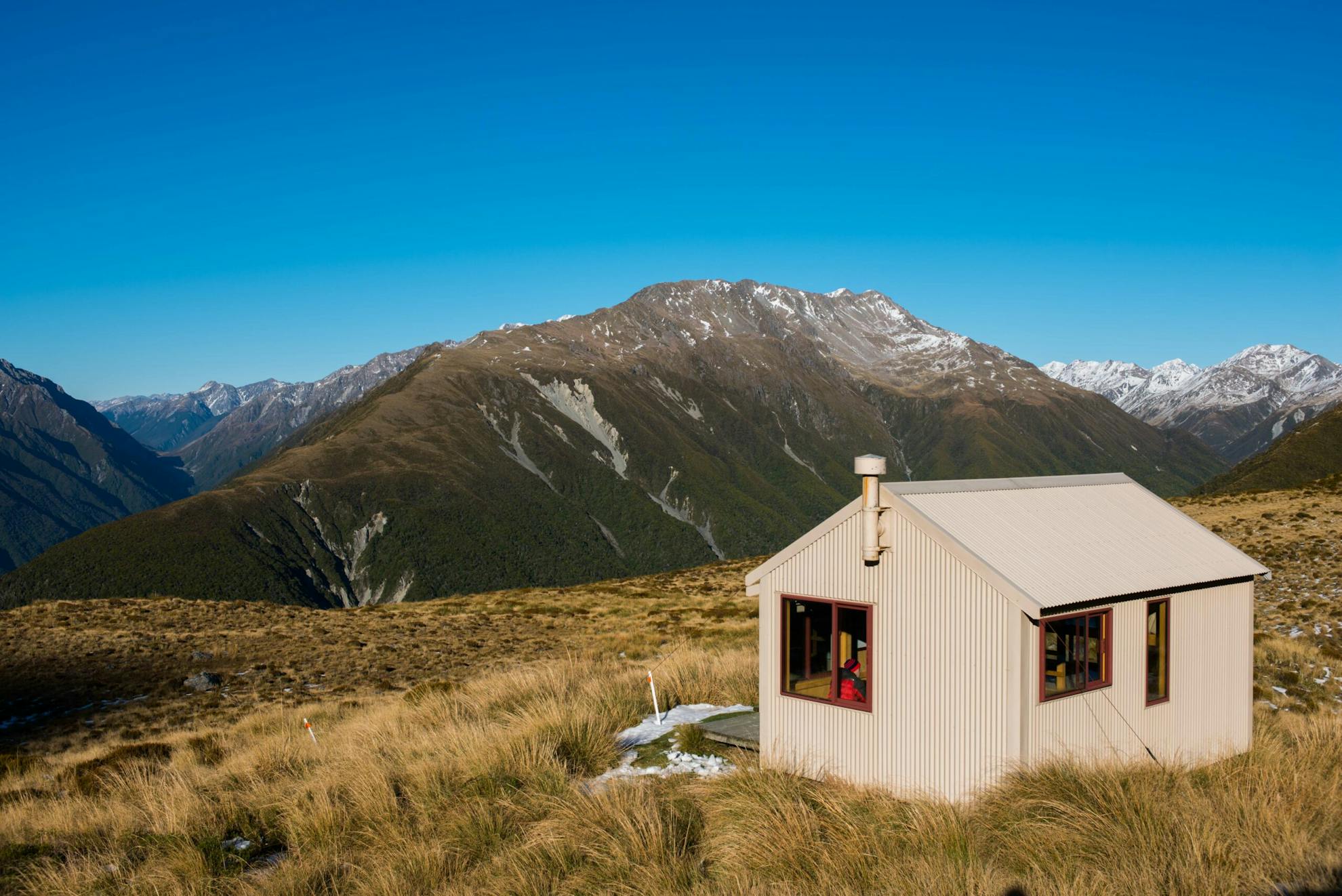
Carroll Hut, Canterbury
Distance 3km Time 2-3hr each way Grade Moderate
By Pat Barrett
Poised in a tussock basin littered with alpine tarns between the Otira, Taipo, and Taramakau rivers, Carroll Hut can provide an exciting night on the tops, albeit one gained after a stiff walk from the valley floor to the basin at 1100m. But a hut at that altitude makes a fine base to enjoy the grand views of Arthur’s Pass National Park and to enjoy a sub-alpine environment.
The current hut replaces earlier versions dating back to the original built by the West Coast Alpine Club in 1938 as a base for skiing trips on the Kelly and Bald ranges.
The region still lures trampers keen to enjoy the alpine wonderland and its numerous tarns, that stretch all the way over to the Taipo Valley where a track descends to Seven Mile Creek.
It’s a steep 750m ascent from SH73 to the hut, with the track traversing spectacularly around the southern lip of the basin.
From the hut, there is much to explore, including an easy ascent of Kellys Hill (1394m) for a grand panorama of Arthur’s Pass National Park.
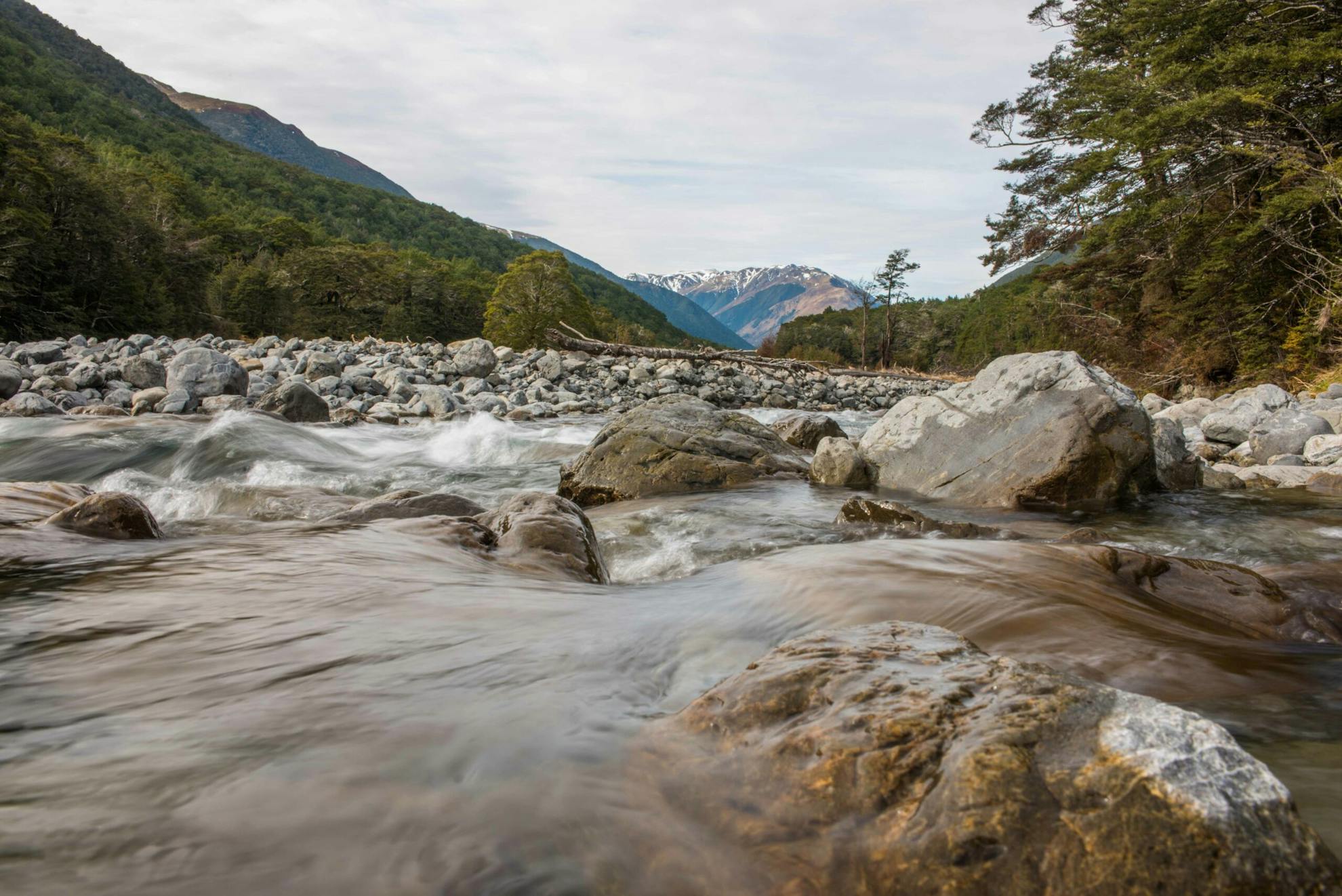
Doubtless Hut, Canterbury
Distance 11km each way Time 3.5hr each way Grade Easy-moderate
By Pat Barrett
Reaching Doubtless Hut is an easy wander through beautiful terrain, over grassy flats and mature beech forest.
A ford of the Boyle River, from the road, provides the only stumbling block, however, it’s usually easy in normal flows. There is a swingbridge approach, south of the ford at Windy Point but this adds around two hours each way – better to get the weather right.
Heading into the Doubtful, a well-marked track and pleasant riverside terraces lead to The Reserve and the rather rundown Doubtful Hut, an old deer culler’s hut. From here, the valley stretches back to the Main Divide with lots of stream crossings, more flats and grand views of the ranges.
The valley is almost arrow-straight, only closing in at the headwaters where Amuri Pass leads to the West Coast. It’s a delightful ramble up valley to Doubtless Hut, which sits in a small bush clearing beside Doubtless River.
If time allows, head to Amuri Pass (993m) for more views and a taste of the sub-alpine environment. This will take about 2hr each way.
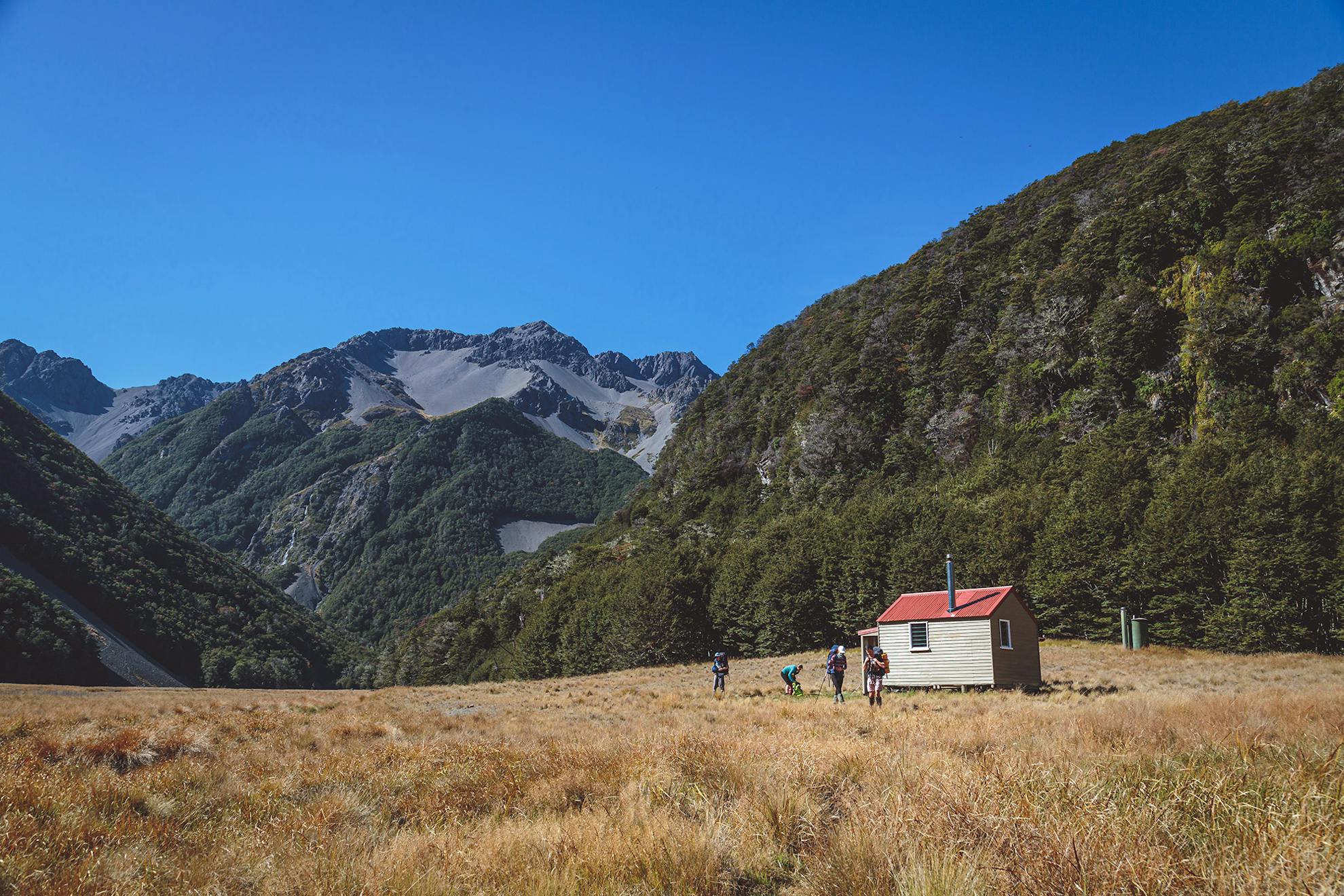
Lees Creek Hut, Marlborough
Distance 8.7km Time 4-5hr Grade Easy-moderate
By Sam Harrison
For those looking to test their skills away from the crowds, the four bunk Lees Creek Hut, nestled on a large grassy flat under the rocky peaks of the Raglan Range, provides relative solitude from the hustle of nearby Nelson Lakes National Park.
It also serves as a base for more adventurous missions into the rugged Raglan Range.
The tone of the trip to Lees Creek is set from the get-go, with an impressive swingbridge crossing the Wairau River. From here, the track follows Lees Creek gently upstream through beech forest. Several crystal blue pools tempt with a swim.
After 4-5hr, grassy flats and the hut are revealed; both surrounded by lofty peaks. The hut is in good condition following work by the Backcountry Trust including the installation of a stove.
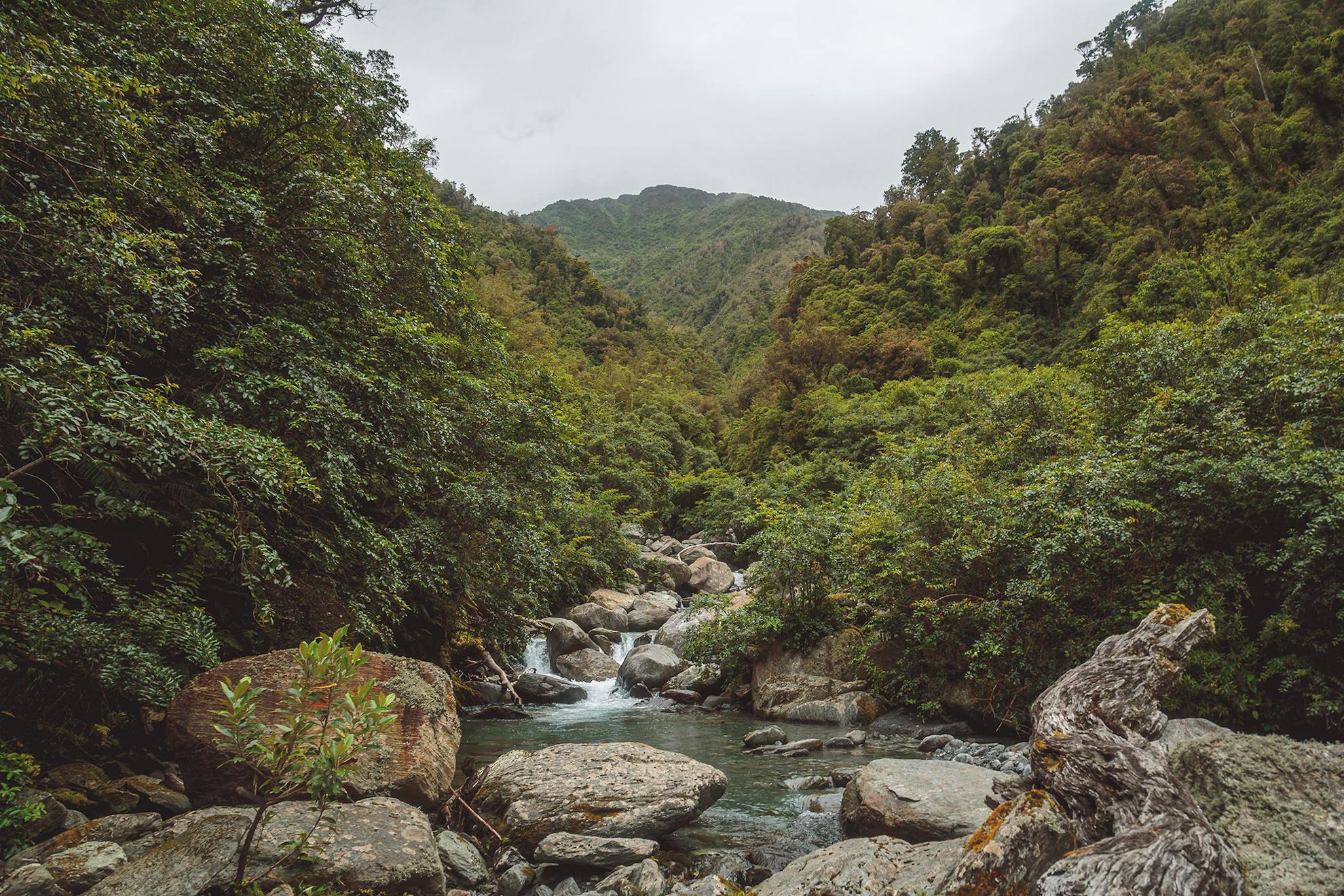
Camp Creek Hut, West Coast
Distance 3km Time 3hr to hut, 8-10hr to summit Grade Difficult
By Sam Harrison
Camp Creek Hut may be the only basic hut in the country to have its own wood-fired bathtub.
The hut, originally built for the Department of Lands and Survey as a replacement for a possum control tent camp, is plush as far as basic huts go. The route to it climbs the side of Camp Creek before becoming an adventurous scramble through the boulder-choked creek, dodging the churning white water and deep blue pools.
Eventually, the route leaves the creek and walkers sidle high above it before rejoining it just before the hut. Don’t forget to check the mailbox and take note of the bathtub that stands proudly out the front.
Time permitting, a rough trail continues behind the hut to Mt Alexander. The views from the summit are amongst the best in the country, stretching over the lower peaks of Arthur’s Pass National Park. Better yet, a hot bath awaits at the hut.
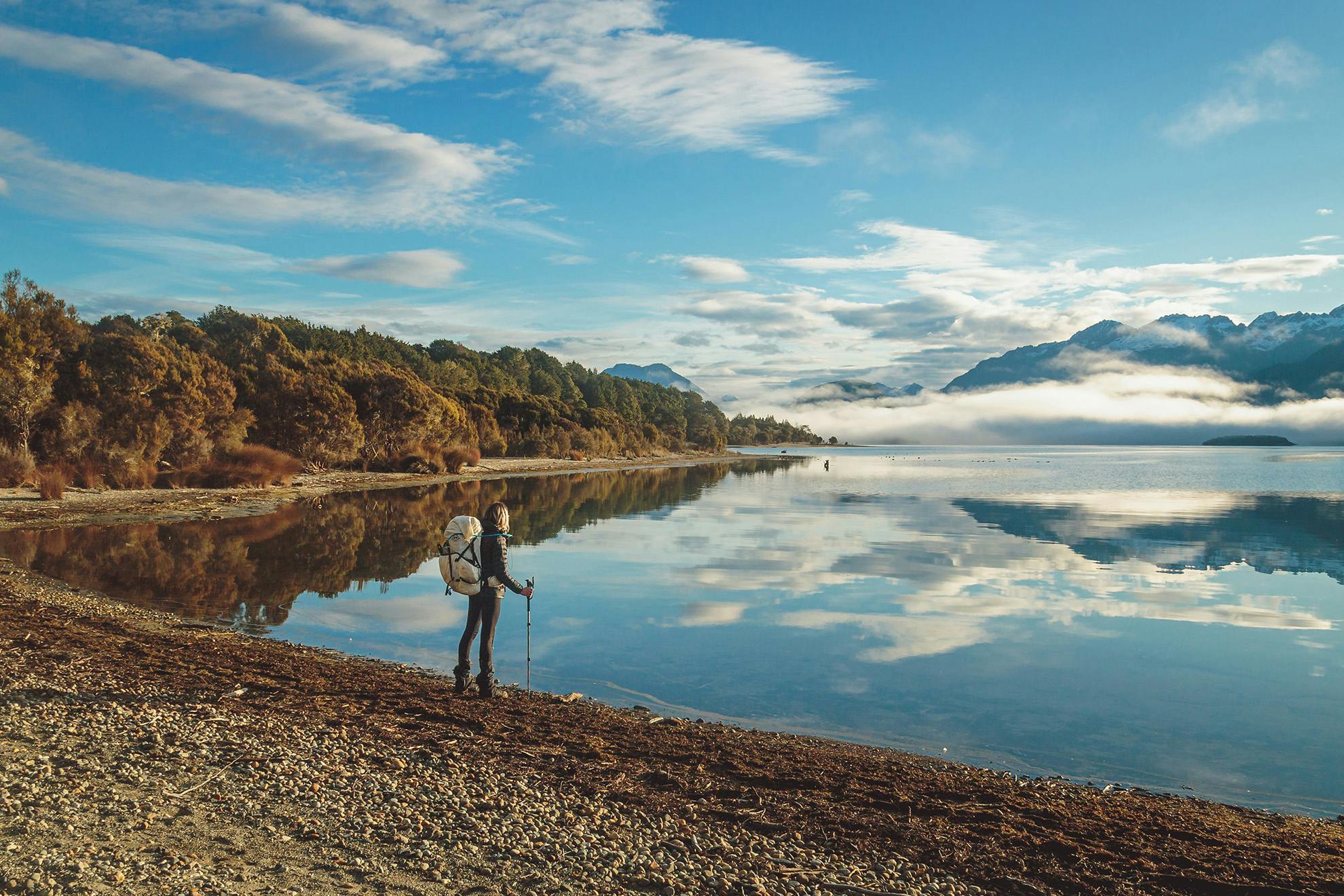
Shallow Bay Hut, Fiordland
Distance 5km Time 1-2hr Grade Easy
By Sam Harrison
Just off the Kepler Track sits a cosy lakefront hut, tucked away from the Great Walk. If the weather is clear there’ll be impressive sunsets behind Cathedral Peaks and the Kepler Mountains. Come morning though, Fiordland’s mountains will likely be hidden by Lake Manapouri’s characteristic mist.
The track to Shallow Bay begins at Rainbow Reach car park, where the Kepler also starts. It initially follows the Kepler Track up the Waiau River before passing through an incredible sphagnum moss swamp on a boardwalk. It is then an easy-going walk through lush forest before a signpost marks the 30min track to the lakefront and Shallow Bay Hut.
The proximity to the car park and the relatively flat walk makes it a great destination for families. It’s also possible to make this the last stop on the Kepler Track for those looking for a cosier alternative to the 40 bunk Moturau Hut.
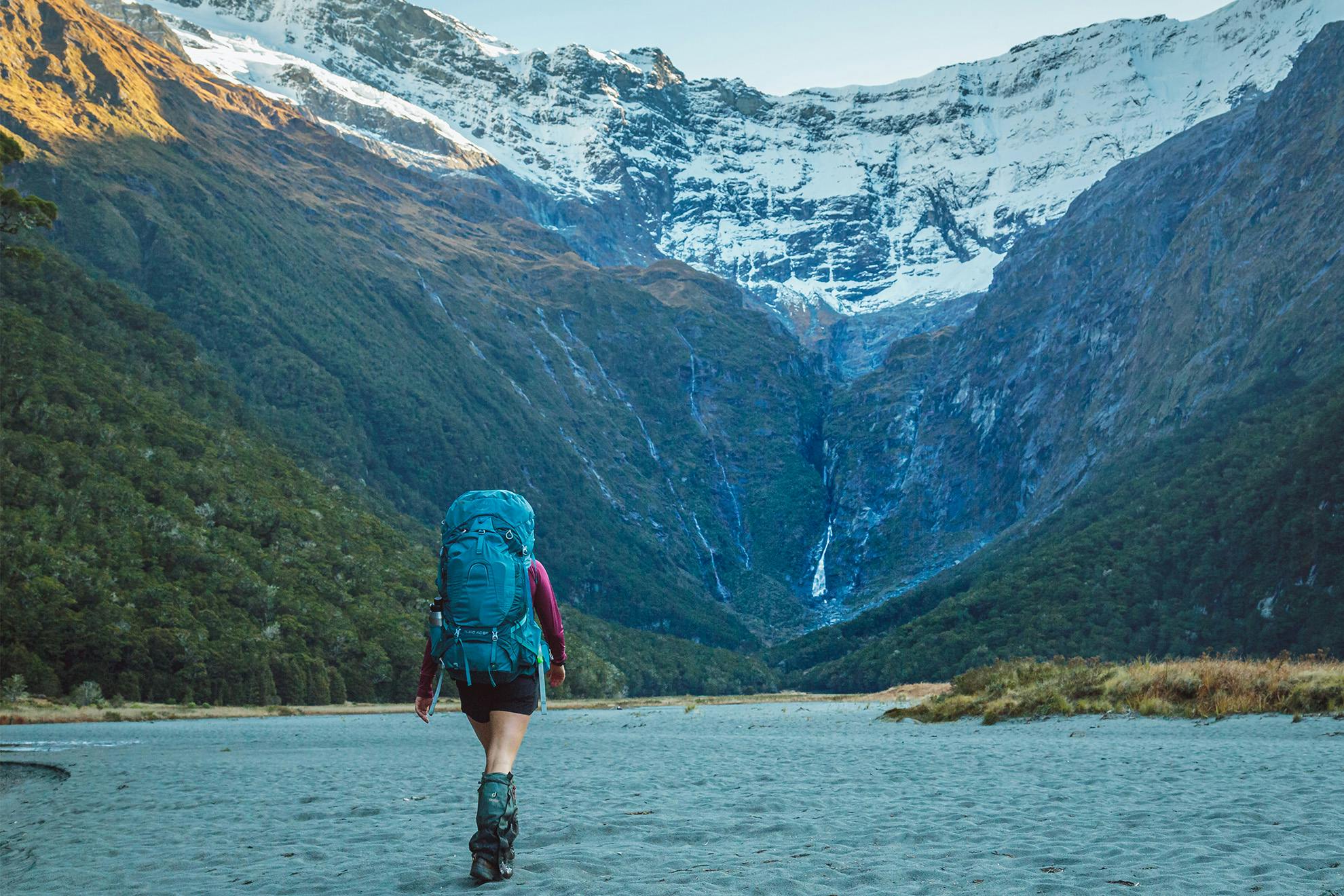
East Matukituki Valley, Otago
Distance 24km Time 8hr return Grade Moderate
By Sam Harrison
The Matukituki River’s west branch is popular with trampers as it leads to French Ridge and Liverpool huts. However, for the more adventurous the East Matukituki offers a spectacular wilderness experience away from the crowds and options abound for an overnight trip.
The spacious Rock of Ages rock bivvy provides a unique opportunity to sleep on nature’s terms. Alternatively, there’s ample camping space at Junction Flat and Aspiring Flats.
The reveal, when walking up Kitchener Track, is well worth the slog away from the East Branch, with the Kitchener Cirque opening as hikers enter Aspiring Flats. The cirque plays stage to Turnbull-Thomson Falls, a spectacular cascade of glacier melt that flows from a lake below the Kitchener Glacier.
If there’s time, closer inspection of the falls is worthwhile, as is checking out the impressive three-wire bridges at Junction Flat that mark the start of the route to Rabbit Pass.
The East Branch track can be accessed from Camerons Flat car park (with a river crossing), or from the car park by the bridge further up the Wanaka Mt Aspiring Road.
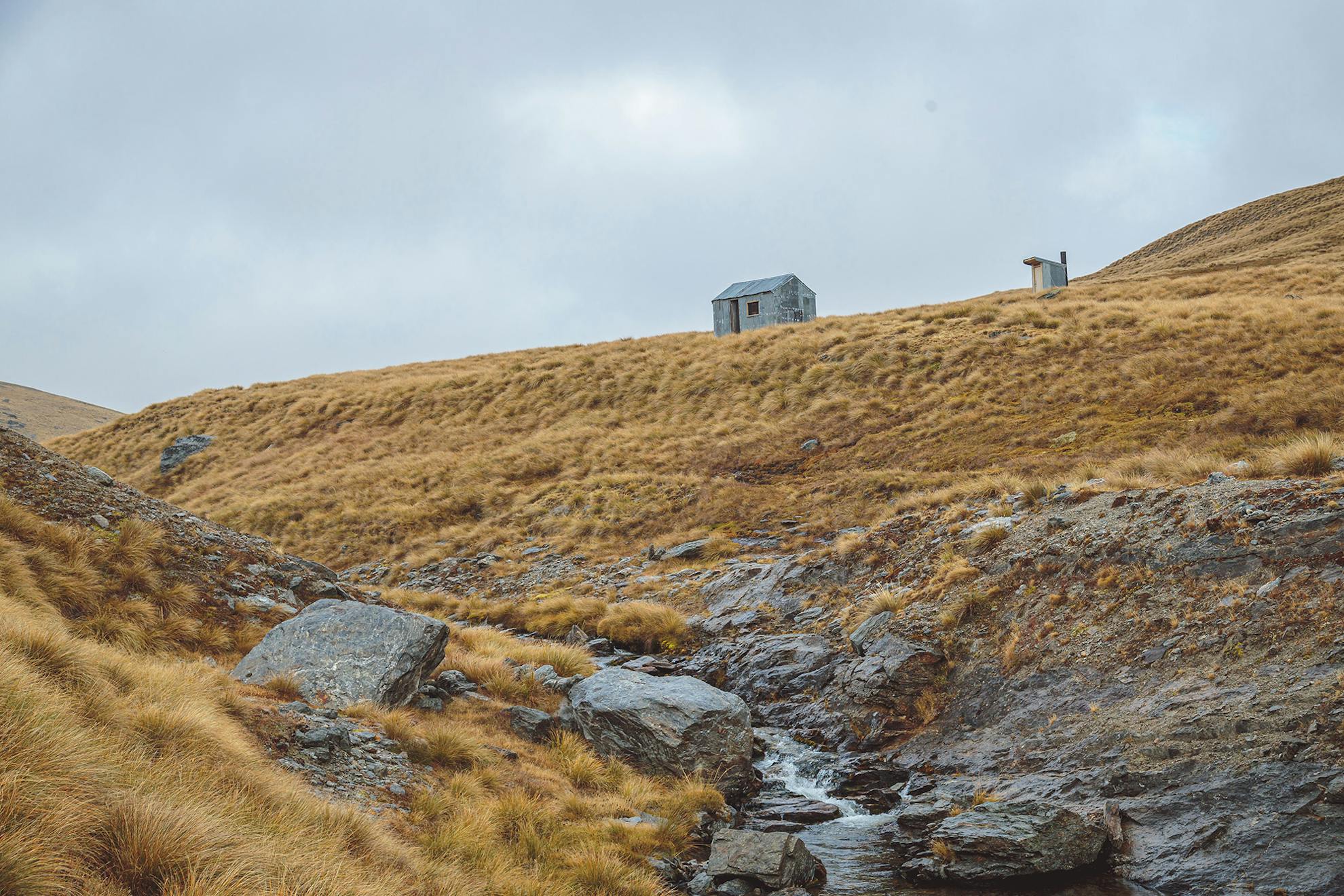
Nicholsons Hut, Otago
Distance 3km return Time 1.5hr return Grade Easy
By Sam Harrison
High above Alexandra sits a giant rock, known to gold prospectors as the Old Man, or Obelisk, and to Māori as the physical manifestation of the giant Kopuwai. The prominent rock stands guard over the high alpine plateau forming the Old Man Range/Kopuwai. It’s a harsh windswept environment that casts a rain shadow over Central Otago.
In winter, the area has been described as the closest in New Zealand you can get to Antarctica. It’s a popular destination for cross-country skiers. In warmer months, the range is a fantastic overnight destination, either by bike or foot. On a clear day, views of Stewart Island/Rakiura, Mt Aspiring/Tititea and Aoraki/Mt Cook are possible.
The Obelisk Loop Track is an excellent way to get a taste of the area, weaving through rocky tor and old gold workings.
But for those wanting an overnight destination, a number of ex-musters huts are available. The character-filled Nicholsons Hut is less than an hour from the Syme Road car park. It’s set by a creek worked by early gold-miners. Remains of water races and rock tailings are near the hut. The high-altitude track starts at 1600m and descends to Nicholsons Hut at 1400m.





